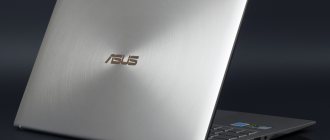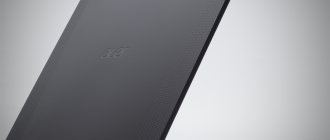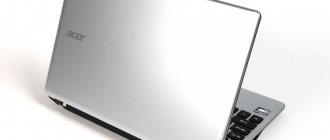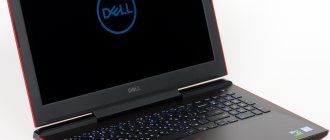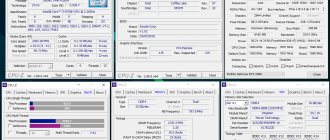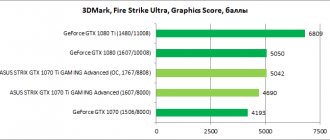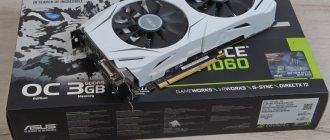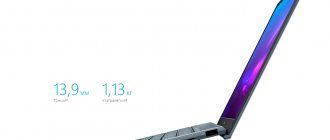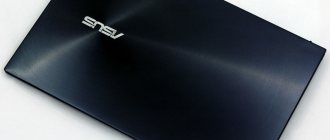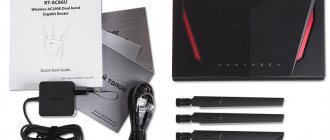Verdict : The ASUS VivoBook S15 is a good laptop with an incredibly colorful design and innovative ScreenPad 2.0, but mediocre battery life and a dim screen hold back its greatness.
pros:
- High overall performance;
- Sleek body design;
- Upgraded ScreenPad 2.0;
- Unique colors for a laptop;
Minuses:
- Boring display;
- Average battery life;
- ScreenPad 2.0 with its quirks;
Take off your boring suit and show off the bright colors of your flowers. This is the philosophy of the ASUS VivoBook S15 (from $699 / R45,000 + VAT), a laptop unique in its brightness that mocks its boring competitors. Offering an incredibly vibrant green and orange color scheme with an innovative secondary display, the VivoBook S15 appears to be an extremely attractive laptop at first glance. But how will it serve as a device designed for students and young people in general? It is not that simple…
The VivoBook S15 offers great specs in a sleek design, great speakers, and a relatively comfortable keyboard, all at a reasonable price.
This is good. The bad news is that the updated ScreenPad 2.0 on the VivoBook S15 still suffers from some issues, and the main 15-inch display is too dim. Add to this the frankly weak battery life, and the VivoBook S15 becomes a good laptop that fails at its potential.
| ASUS VIVOBOOK S15: PRICES AND CONFIGURATIONS
Pricing for the VivoBook S15 starts at $699 (RUR 45,000 + VAT) for the model with a Core i5-8265U processor, 8 GB of RAM and 256 GB SSD. We came to review the VivoBook S15 model with 512 GB PCIe NVMe SSD, costing $749 (49,000 rubles + VAT).
If you need more power, the mid-range VivoBook S15 costs $899 (R58,500 + VAT) for a Core i7-8565U processor, 8GB of RAM and a 256GB SSD with a discrete GeForce MX250 graphics card.
Want more performance and memory? Spending $999 (RUR 65,000 + VAT) on the VivoBook S15 will get you a Core i7-8565U processor, 12GB of RAM, 512GB SSD with an MX250 graphics card.
⇡#Performance of the processor, RAM and disk subsystem
For greater clarity, let's compare the performance levels of the VivoBook 15 X512U and the recently tested ZenBook models. The hero of the article, as expected, loses to laptops based on Whiskey Lake chips, which are known to operate at higher frequencies.
| Intel Core i5-8250U | Intel Core i7-8565U | Intel Core i7-8565U | Intel Core i5-8250U | Increase/decrease in performance, % (relative to the HUAWEI MateBook X Pro model) | |
| Corona 1.3, with (less is better) | 435 | 373 | 294 | 368 | 15 |
| WinRAR 5.40, with (less is better) | 764 | 523 | 486 | 591 | 22 |
| Blender 2.76, with (less is better) | 353 | 340 | 271 | 351 | 0 |
| x265 HD Benchmark, FPS (more is better) | 9,9 | 10,96 | 14,4 | 11,4 | 15 |
| CINEBENCH R15, points (more is better) | 530 | 583 | 706 | 592 | 12 |
The choice of drive also leaves its mark. In our case, we use a frankly slow SSD SanDisk SD99SN8W128G1102. Not fast - because there are not very many really productive drives with a SATA 6 GB/s interface with a capacity of 128 GB on the market. Nevertheless, such an SSD is quite enough to quickly load the operating system and, for example, quickly open a browser. It can't be compared to a hard drive.
SSD performance
HDD performance
| ASUS VIVOBOOK S15: DESIGN
Imagine an ASUS laptop with a green lid and neon orange accents.
From the deep blue ZenBook 13 to last year's green VivoBook, ASUS products are striking in their bold, bold colors.
But camouflage green side by side with bright orange? This is a new level even for ASUS. Of course, when you throw yourself into bright colors, you risk alienating customers. There's no doubt that people in our office had very different feelings about the aesthetics of the VivoBook S15.
One of our colleagues said that the color green has an unpleasant tint. Another really liked the design and appreciated ASUS' decision regarding the color combination.
We have two opinions about flowers. We love how the mother-of-pearl lid changes tones depending on the light it hits. But the yellowish-green hue isn't the most attractive; we wish ASUS had simply continued the white color of the bottom bezel across the lid of the laptop, even if it made the VivoBook S15 look like Pixel phones.
If you don't like the green and orange combo option, you can opt for what ASUS calls "Punk Pink" or the more traditional (and boring) silver lid. Regardless of your choice, you get an offset VivoBook logo for the first time.
Once you find the color combination that suits you, you'll appreciate the thin bezels surrounding the VivoBook S15's 15-inch display and aluminum lid. Another unique design element is the ASUS ErgoLift hinge, which tilts the back of the keyboard by three degrees for a more comfortable typing experience.
The VivoBook S15 is a fairly compact machine (358.1 x 231.1 x 17.8 mm), but not the lightest in its class (1.7 kg). The new version is smaller but weighs slightly more than last year's model (363.2 x 243.8 x 17.8 mm / 1.68 kg), while the Lenovo IdeaPad 530S (358.1 x 243.8 x 15. 2 mm / 1.68 kg) lighter and thinner.
Design
The device took over some of the features of the flagship Zenbook line and turned out to be very stylish. The aluminum body looks great and doesn't attract fingerprints. The assembly is of high quality, nothing creaked or sagged during operation. The display hinge is assembled well - the screen does not wobble when working with the laptop on your lap, but you won’t be able to open the device with one hand. The only thing that disappoints is the large frames around the display. It would be possible to easily remove a centimeter from each side. Therefore, the dimensions of the device are quite typical for 15.6-inch laptops. The same applies to the weight of the device – 2.2 kg. The laptop comes with only a fairly large charger, which must be taken into account if you plan to carry the computer with you often.
| ASUS VIVOBOOK S15: PORTS
We are pleased with the range of ports offered by the VivoBook S15. A Thunderbolt 3 input would be ideal, but this relatively new standard remains unavailable at the laptop's price point.
The left side of the VivoBook 15 houses two aging USB 2.0 ports, while the right side has a USB 3.1 Type-A port, USB-C, HDMI and a microSD card slot, as well as a headphone/mic jack.
⇡#Appearance and ergonomics
If we didn’t know how much this VivoBook model costs, we would decide that this is clearly not a laptop for 60–70 thousand rubles, but something more expensive. It looks and is better built than most of the work laptops we've passed through this year. All body panels, except for the frame around the screen, are made of aluminum sheets, and quite thick ones, which has a positive effect on the rigidity of the structure. And this despite the fact that the laptop turned out to be thin (16.1 mm at the highest point from the working surface) even by the standards of compact ultrabooks, and not just traditional machines with a 15-inch screen. And thanks to the beveled edges, it seems even thinner than it actually is. The only thing that gives away the real price of the device is the notorious display frames, which are quite wide in all directions.
The laptop has several color options: entirely gray and silver with colored covers - red or green. Our test sample, gray, looks elegant and strict, and only the bright light green edging of the Enter key sets off the overall minimalism of the design.
As we have already noticed, the VivoBook S15 S533FL is built in a rigid metal chassis, and this is immediately felt when you start typing on the laptop’s keyboard. At such a price as the S533FL (especially its lower configurations), we simply did not dare to count on a high-quality keyboard, but we were pleasantly surprised. Not only does it not shake when the keys are struck sharply and flexes in the center only under strong pressure, the key mechanism provides a precise actuation point and quickly returns the lid to the neutral position. The touchpad is also worth praising: the panel is well fixed and pressed with pleasant feedback, but quietly. In addition, the VivoBook S15 S533FL touchpad integrates a fingerprint scanner, which, in the absence of an infrared camera, is the only biometric means of authentication. But, alas, this is an optional feature, which, for example, is not in our test unit, which was pumped almost to the maximum in other specifications.
The beveled edges don't leave much room on the laptop's body for external interfaces, but everything you need is here (four USB ports and HDMI) and even a little more (a microSD card reader slot). The only pity is that among the four USB connectors, only one Type-A and the only Type-C operate at 3.2 Gen 1 speeds, and the remaining two Type-A are limited to the USB 2.0 standard.
The lack of Thunderbolt ports means that the laptop is unable to use this universal interface not only for data transfer, but also for power. Instead, the compact power supply is connected with a standard barrel plug.
| ASUS VIVOBOOK S15: DISPLAY
Unfortunately, the VivoBook S15's 15.6-inch (1080p) display is no better than last year's weak screen. This is truly unfortunate because the S15's thin bezels draw the eye to the laptop screen.
We've seen worse displays, but The King's Man trailer looked dull on the VivoBook S15's panel. The elaborate ballgowns at the party promised to stun with bright red flowers and shimmering gold accessories, but instead appeared faded and worn.
The screen isn't so bad that you can't see colors, but we were hoping for more. Even though you get fairly soft colors, the VivoBook S15's screen remained sharp enough that we could make out the individual crystals of the sparkling chandelier in the ornate ballroom.
According to colorimeter tests, the VivoBook S15's panel covers about 61% of the sRGB color gamut, which is behind its predecessor (68%), Envy 13 (109%) and IdeaPad 530S (72%). The average in the segment is 80%.
Screen brightness isn't a big issue, although the VivoBook S15 is also underwhelming in this department, offering only 252 nits. It's roughly on par with the brightness of its predecessor (257 nits), the IdeaPad 530 (255 nits), and the category average (255 nits), but the Envy 13's panel is much brighter (410 nits).
Hardware and performance
Depending on the modification, the VivoBook Pro N580ND may be based on an Intel Core i5 7300HQ or a Core i7 7700HQ. The video subsystem is represented by Nvidia GeForce GTX 1050 with 2 GB or 4 GB of memory. RAM is from 8 to 16 gigabytes, and the disk subsystem can contain either one hard drive or its combination with an M.2 SSD drive.
The test is one of the most optimal versions: an older Intel Core i7 7700HQ and a two-gigabit Nvidia GeForce GTX 1050. 8 GB of DDR4-2400 RAM operate in single-channel mode.
In practice, the combination of an older Intel mobile processor and an average Nvidia video card is enough for the vast majority of everyday, multimedia and even professional tasks, this is confirmed by all kinds of benchmarks. During testing, the laptop was powered from the mains.
Graphics are provided built into the Intel HD Graphics 630 processor and Nvidia GeForce GTX 1050. The integrated card is for office and multimedia tasks, and graphics from Nvidia are connected in games or, for example, during editing. The GeForce GTX 1050 cannot be called the most powerful offering in the world of mobile graphics, but rather an optimal price-performance ratio that can easily handle modern games at medium-high graphics settings.
The hero of today's review is equipped with an air cooling system based on copper heat pipes with two massive coolers. In the stress test, all 4 cores of the Intel Core i7 7700HQ were loaded at 100%. As expected, the processor frequency was fixed at 3.4 GHz, however, after 15-25 minutes the frequency “slipped” to 3.25 GHz. During further testing, the frequency dropped to 2.8 GHz for a short time, after which it rose back to 3.25 GHz. During the more than hour-long stress test, temperatures on the cores did not rise above 88°C, and on average remained at 79°C, which is a tolerable value for this processor. The noise from the cooling system is uniform, without extraneous sounds or howling air flow.
The combination of productive hardware and an efficient cooling system allows you to use the VivoBook Pro N580VD as a gaming machine. The laptop handled Grand Theft Auto 5 perfectly well at medium-high graphics settings. The number of frames per second remained in the range from 35 to 60 without obvious drawdowns. The most important thing is that after a long game the system performance did not deteriorate, despite the fact that the case became noticeably heated at the point where the hot air was released.
The disk subsystem is represented by an SK Hynix HFS128G39TBD-N210A SSD drive installed in the M.2 slot and a classic SATA III hard drive Seagate ST1000LM035. Perhaps this is the most optimal set for a multimedia machine: a fast flash drive for the system and the most important applications, and a capacious hard drive for everything else. The presence of two interfaces at once opens up endless possibilities for upgrades, something that most modern models cannot boast of.
They certainly didn’t skimp on the communication capabilities of the hero of our review. The Intel Wireless-AC 8265 wireless module operates in two Wi-Fi bands and supports 802.11ac networks. 2x2 MIMO multi-streaming allows you to achieve speeds of up to 867 Mbps over a wireless network. In addition, the network card is equipped with a Bluetooth 4.2 module. If desired, the laptop can be connected to a wired network using the Ethernet port.
| ASUS VIVOBOOK S15: KEYBOARD AND TOUCHPAD
We really liked the keys on the VivoBook S15 keyboard: they are located at a sufficient distance from each other, with a numeric keypad on the right.
Otherwise the keyboard is quite ordinary. The keys are large enough and have decent travel, although they may seem shallow compared to other 15-inch laptops.
Each keystroke responds with a crisp impact. We prefer activation over lighter weight, so we found the VivoBook 15's keys to be a little stiff, but that's a matter of taste. Additionally, the texture that ASUS uses for the laptop's lid makes the keys feel sticky and the font is hard to read on the silver surface.
On the test, we achieved 117 wpm with 95% accuracy, which is slightly slower than the usual 119 wpm with the same average accuracy.
As a standard touchpad (where we have the ScreenPad 2.0), the surface under the keyboard (5.1 x 2.6 inches) does the job just fine. We had no trouble performing Windows 10 gestures, including two-finger pinch-to-zoom and scrolling, thanks to the large size of the touchpad.
Bottom line
The Asus VivoBook Pro N580 laptop offers excellent hardware, including a powerful processor and fast RAM, but the SSD storage is too slow. The laptop can handle any task, however, the battery drains very quickly. Its disadvantages outweigh its advantages - the N580 cannot compete with modern laptops.
Possible alternatives
There are many other 15-inch laptops with prices ranging from $500 to $2,000. For example, the Dell XPS 15 has high build quality, thin frames, a 15.6-inch display and a lightweight body. A configuration with a Core i7-7700HQ, GTX 1050, a non-touch Full HD display, 16 GB of RAM and a faster 512 GB PCIe SSD drive costs $1,725 (RUR 101,000). Yes, it is more expensive than the version from Asus, but you will get a durable battery, compactness and no less high performance.
Another option is the Lenovo Yoga 720 15. It's a very portable gadget that can be used as a tablet or laptop, but it offers similar performance to the N580. A model with a 15.6-inch Full HD display, 16 GB of DDR4-2400 MHz RAM and a 512 GB PCIe SSD is available for $1,300 (RUB 76,000).
Advantages of Asus VivoBook Pro N580
- Stable performance
- Games on medium settings
- Accurate colors
- High sound quality
Disadvantages of VivoBook Pro N580
- Thick frame
- Dim display
- Weak battery
| ASUS VIVOBOOK S15: SCREENPAD 2.0
The VivoBook S15 is the first laptop we've tested with the new ScreenPad 2.0, a touchpad that turns into a secondary 5.65-inch touchscreen with a resolution of 2160 x 1080 pixels. Compared to the first-generation ScreenPad we tested on the ZenBook Pro 15, the ScreenPad 2.0 is larger, offers lower power consumption, and can be turned on and off using F6. A few subtle changes to the software also make it easier to use, although overall the technology is still a bit rough around the edges.
The new 5.56-inch screen is bright enough, and we didn't experience any issues with touchpad sensitivity. We also like the changes made to the ScreenPad interface, which reminds us of the app drawer on an Android smartphone.
Clicking on Evernote's preset icon opens the app on the ScreenPad. You can then move the app to the home screen by tapping the app switcher icon located in the bottom left corner of the smaller screen. To move the app back, we simply clicked and dragged the Evernote window as if we were working on a single screen. Everything worked even smoother than we expected.
New to ScreenPad 2.0 is the Navigator App Shortcut, which lets you view all your open apps on the ScreenPad, much like you do on your phone. This solution allows us to organize all our applications and close those that we did not use.
While the new app switcher works well, ScreenPad 2.0 is still a work in progress. An unfortunate side effect of ScreenPad 2.0 is the need to frequently switch between the touchpad and the touchscreen.
Additionally, ScreenPad 2.0 dims when you're in classic touchpad mode, and then turns off the touchpad when you want to see something on the small screen. We were hoping to manage Google Play Music using the ScreenPad 2.0, but having to constantly switch between it and the classic touchpad was so frustrating that we had to abandon the idea and move the music back to the main screen. We quickly came to the conclusion that you'll need a mouse to truly use ScreenPad 2.0.
You should also remember to return your apps to the big screen when you're done using them. We spent a lot of time trying to figure out what was wrong with the Chrome browser simply not opening, before realizing that it was opening in ScreenPad 2.0 because there was already a browser window open there.
On the plus side, simple tasks like taking notes or using the numeric keypad work great on the ScreenPad 2.0, and some of the pre-installed Office 365 assistant tools promise to improve day-to-day productivity.
Ultimately, ScreenPad 2.0 can be a useful tool once you get comfortable with its quirks, but if you're someone looking for a simple, straightforward experience, you may be disappointed.
| ASUS VIVOBOOK S15: PERFORMANCE
We were pleased with the performance of the VivoBook S15, even though the review laptop was equipped with an Intel Core i5-8265U processor with 8GB of RAM. We easily loaded 18 Chrome tabs, four of which were streaming 1080p video. Amid this workload, we launched several more tabs to read a not-so-positive review of the movie “Twins” and stream a music album using YouTube Music.
As expected, the VivoBook S15 impressed in our performance tests compared to other laptops in its price range. With a score of 15,068 on the Geekbench 4 overall performance test, the VivoBook S15 beat its predecessor (12,744 / Core i5-8250U), the IdeaPad 530S (12,607, Core i5-8250U) and the category average (13,178) by a wide margin, just behind the Envy 13 (15147, Core i5-8265U).
The VivoBook S15 did not bend in our Handbrake video transcoding test. The ASUS laptop converted 4K video to 1080p resolution in 19 minutes and 32 seconds, which is several minutes faster than the IdeaPad 530S (21:05), Envy 13 (21:16), last year's VivoBook S15 (25:38) and the average by category (24:29).
ASUS did not skimp on the physical memory of the VivoBook S15. Our VivoBook S15's 512GB PCIe NVMe SSD copied 4.97GB of media files in 11 seconds at 462.8MB/s. This is much faster than last year's SSD (124.1 MB/s) and beats the Envy 13 (391 MB/s), IdeaPad 530S (282 MB/s) and the category average (225.6 MB/s).
Indistinguishable from top ultrabooks
| Retail price: | from 47,990 rubles |
| CPU: | Intel Core i5-10210UIntel Core i3-10110UAMD Ryzen 3 |
| Screen: | 14 inches Full-HD (1920 x 1080 pixels) |
| Graphic arts: | Intel UHD Graphics |
| RAM: | up to 16 GB of LPDDR4X RAM with a frequency of 2666 MHz |
| Drives: | up to 1 TB PCIe 3.0 x4 NVMe512GB+32GB Intel Optane |
| Network connections: | Intel Wi-Fi 6 (802.11ax)Bluetooth 5.0 |
| Camera: | 3D Infrared Camera with HD Resolution and Windows Hello Support |
| Connectors: | 1 x USB 3.2 Gen 1 Type-C (data transfer only) 1 x USB 3.2 Gen 1 Type-A2 x USB 2.01 x 3.5 mm audio jack 1 x MicroSDHDMI slot |
| Audio: | ASUS SonicMaster Audio System Certified by Harman/Kardon Microphone array, Cortana voice assistant support, voice input recognition support |
| Keyboard and touchpad: | Keyboard with 1.4 mm key travelTouchpad with NumberPad (optional)Fingerprint scanner (optional) |
| Battery: | 50 Wh Lithium Polymer Fast charge up to 60% in 49 minutes |
| Weight: | 1.4 kg |
| Dimensions (W x H x D): | 32.49 x 21.35 x 1.59 cm |
Production technologies have reached the point where good hardware can fit into not only premium devices.
The price of the VivoBook S14 is exactly between plump budget phones and elegant flagships. At the same time, most of his traits fell into the second group.
With a thickness of 15.6 mm, the laptop weighs 1.4 kg.
Strong indicators for a device that, it seems, is not aimed at the ultra-expensive segment and does not have to take on dimensions. The advantage is obvious: with the S14, the backpack will not pull down and tear the zipper of the bag with clumsy frames.
But there is a compromise. The cooling was not placed very carefully, so the air is taken in in the center of the bottom, and not somewhere on the edges.
Typically, in such cases, the cooler is helped by the proprietary ErgoLift system, when an open panel with a screen slightly lifts the bottom of the laptop. But here there is a classic and familiar mechanism to everyone.
So there are no levers, and for efficient cooling, a fixed protruding leg was inserted into the far part of the bottom.
This detail clouds the “premium” impression a bit. But you will rarely see it, and from all other angles the device looks better than many competitors.
| ASUS VIVOBOOK S15: GRAPHICS
If you want to play games on the VivoBook S15, we recommend spending a little more on the optional GeForce MX250 GPU.
The integrated UHD 620 GPU featured in our review scored an impressive 82,159 points on the 3DMark Ice Storm Unlimited test, beating the 2020 model (65,313), the IdeaPad (69,450), and the category average (66,849). The Envy 13 (82270) beat the VivoBook with some difficulty.
Interestingly, Dirt 3 runs smoother on the older VivoBook S15 (59 FPS) and IdeaPad 530S (49 FPS) than on the latest ASUS laptop (31 FPS) or the recently released Envy 13 (31 FPS).
| ASUS VIVOBOOK S15: WEB CAMERA
It's just a bad webcam. Despite the classic placement of the lens (720p) above the screen, the image that the camera captures is lifeless and crusted with visual noise.
We looked like the Minecraft character in the selfie we took because our face was square. The light located above the head disappeared somewhere, and the red tones of the face disappeared, as if we had put on makeup.
| ASUS VIVOBOOK S15: SOFTWARE AND WARRANTY
ASUS took our complaints about adware on last year's VivoBook S15 to heart.
The only ASUS-branded program pre-installed on the VivoBook S15 is MyAsus. It's responsible for updating the S15's software, assigning hotkeys, adjusting on-screen white balance, and finding support documentation, all of which can be done using the MyAsus app.
There are also several third-party apps found on the VivoBook S15 that are not part of Windows 10, including the SmartAudio app for adjusting microphone volume and ScreenXpert, which supports ScreenPad 2.0.
Everything else comes included with Windows 10 Home. We wouldn't blame you for deleting Candy Crush, McAfee Personal Security, or LinkedIn.
ASUS ships the VivoBook S15 with a one-year warranty.
ASUS VivoBook R459FA laptop review
Table of contents
- Introduction
- Specifications
- Appearance and design
- Keyboard and touchpad
- Display
- Software and firmware
- Hardware platform and performance
- Multimedia
- Communication and security
- File system
- Battery life
- Conclusion
Introduction
Most often, we receive for testing versions with the maximum (or almost) level of equipment and corresponding cost.
However, the truth is that not all users need such performance and not everyone can afford to buy a laptop at a high price. As in other market segments, affordable models are the most popular. Such “mass” is determined by a more interesting and optimal ratio of cost and capabilities obtained.
We will consider one of these ultrabooks. It is modestly equipped and offered at a relatively modest price. During testing, we will try to understand how the choice of an available modification affects the functionality and sensations of use.
We can answer these questions using the example of the ASUS VivoBook R459FA ultrabook.
Specifications
announcements and advertising
2080 Super Gigabyte Gaming OC for 60 rubles.
Compeo.ru - the right comp store without any tricks
RTX 2060 becomes cheaper before the arrival of 3xxx
Ryzen 4000
series included in computers already in Citylink
The price of MSI RTX 2070 has collapsed after the announcement of RTX 3xxx
Core i9 10 series is half the price of the same 9 series
The price of memory has been halved in Regard - it’s more expensive everywhere
| Device type | Laptop |
| Model | ASUS VivoBook R459FA-EB179T |
| CPU | Intel Core i3-8145U |
| Video processor | Intel UHD Graphics 620 |
| operating system | Microsoft Windows 10 |
| RAM, GB | 4 |
| Built-in memory, GB | 256 |
| Screen | 14″ IPS, 1920 x 1080 |
| Wireless interfaces | Wi-Fi; Bluetooth |
| Battery, mAh | 3 650 |
| Dimensions, mm | 322 x 210 x 18 |
| Weight, kg | 1.4 |
| price, rub. | 44 990* |
*Official cost of this modification.
This model implies a specific modification with a single equipment option. It is worth noting the use of an up-to-date hardware platform and the absence of attempts to save on things that could significantly affect the user experience. Thus, the display retains Full HD resolution. The only thing that causes mixed feelings is the amount of RAM, which seems to be enough, but in 2020 it is no longer enough. However, testing will put everything in its place.
Attentive users will pay attention to the atypical name of the model. This is the name of this particular model for sale in a specific chain of stores. It has a “global” version with a wide list of modifications, but we will focus on this modification. Apparently, it corresponds to one of the versions of the ASUS VivoBook 14 X420UA ultrabook. Although it cannot be said with certainty that the same modification is offered under the “global” name as the one that came to us for testing.
Appearance and design
The ultrabook is made in the proprietary design of the line. The inexpensive model has a plastic case.
The top cover with a matte surface offers good practicality. It does not collect fingerprints and does not get dirty. The plane does not have any pattern or texture, only the silver manufacturer’s logo flaunts in the center.
To make opening the lid easier, there is a small protrusion. The cover is securely fixed in the specified position and does not play.
The back side is covered with a single cover with ventilation grilles and speaker grilles. Three rubber feet act as stops - two small ones closer to the user and a solid one extended in the area of the hinges. In the working position, the emphasis falls on the top cover, which is equipped with its own legs.
The panel around the keyboard is also plastic and matches the color of the case itself, only the black panel around the display stands out.
Traditionally, for modern ASUS laptops and ultrabooks, air outlet is implemented to the display; the ErgoLift hinge mechanism also additionally creates space for air outlet.
On the left side you can see USB-A 2.0 and USB-C 3.1 ports. And on the right side there are USB-A 3.1 and HDMI connectors, as well as ports for connecting a wired headset and power.
There is also a slot for microSD memory cards and LED activity indicators.
Removing the cover does not require much effort. Here we can note the dense layout and quite interesting arrangement of components.
The motherboard fits tightly into the dimensions of the case, skirting the battery. There is a minimum of free space; all components are placed on a common printed circuit board. For greater rigidity of the body, special ribs are provided that improve the resistance of the body under bending loads.
Although this time the case is made only of plastic, it does not suffer from a lack of rigidity and structural strength. Thanks to the use of high-quality plastic and additional amplifiers, the manufacturer has achieved good results. We also note the classic design of modern ASUS ultrabooks, the small thickness of the case and the use of the proprietary ErgoLift hinge mechanism.
Keyboard and touchpad
The panel around the keyboard matches the color and texture of the outer cover. The semi-matte surface looks presentable and is not prone to getting excessively dirty or attracting fingerprints.
There is a small recess for the keyboard, designed to prevent touching the surface of the display and keys. The buttons are made quite large with rounded corners and optimal spacing between them. The movement of the buttons is clearly defined and unmistakably determined. This is supported by good pressing force, which eliminates accidental activation and does not cause fatigue during long-term operation.
Although the modification is one of the available options, we note the keyboard backlight as a nice feature. It is single-color and has only brightness adjustment.
The touchpad is combined with buttons, and a fingerprint scanner is integrated into its panel. Pressure is felt over the entire area of the touch panel; the surface itself is quite tactilely pleasant.
The keyboard and touchpad are classic, with typical performance. Our hero is well suited for active work with text; it won’t take a long time to get used to the features of this keyboard, and the touchpad is easy to use. There are no proprietary features like ScreenPad or NumberPad provided here. However, this is not surprising, because we are talking about an affordable model.
Display
The display diagonal is 14 inches, resolution is 1920 x 1080 pixels. This resolution is optimal both for a given display diagonal and for the operating system.
Visually, the display pleases with rich colors and wide viewing angles.
Using a colorimeter, we tested the backlight brightness and the quality of the factory color calibration.
| Brightness level, % | White brightness, cd/m2 | Black brightness, cd/m2 | Contrast, x:1 |
| 100 | 245 | 0.270 | 907 |
| 50 | 94 | 0.103 | 913 |
| 0 | 14 | 0.015 | 933 |
The maximum brightness reserve is not the highest, but it will be enough for comfortable use. Also, in favor of the comfort of readability of the display and the absence of glare when working with bright light sources, a matte surface of the matrix is provided.
The graphs are located as closely as possible to each other and only deviate slightly from the reference value.
The indicators in the second graph also turned out to be uniform. It can be seen that the graphs practically coincided with each other, repeating the reference indicator.
Although most modern displays are characterized by inflated color temperatures, our hero displays shades with a natural color temperature.
But with the color range, everything turned out to be not so great. You can notice a significant lack of shades. However, we note the absence of a pronounced deviation towards any of the colors. This allows you to get a pleasant color rendering and does not cause any complaints during use.
The points of the gray wedge are grouped within the delta. Parasitic shades will not bother the user and create discomfort.
As a result, the display turned out to be quite good, especially considering the cost. It is clearly visible that the manufacturer has worked on color calibration and used a high-quality matrix with wide viewing angles. Among the weaknesses, we note that the range of shades is not the widest, but this should not cause difficulties during use.
Software and firmware
The operating system is Microsoft Windows 10 in the home version for one language.
This is a licensed copy and this option can be called the most optimal for everyday use in terms of price and functionality. The computer does not differ in any additions from the manufacturer.
Hardware platform and performance
The tested ultrabook received an Intel Core i3-8145U central processor with a base clock frequency of up to 2.1 GHz. This is a dual-core model that supports four threads.
The integrated graphics card is Intel UHD Graphics 620.
The amount of RAM is 4 GB. By modern standards, this figure can hardly be called impressive. However, this will be enough for comfortable work in basic applications. But you won’t be able to increase the reserve - all the memory is soldered on the motherboard. But the manufacturer has provided for the memory to operate in dual-channel mode.
Although our expectations are quite modest, we will conduct testing in various benchmark applications and evaluate the abilities of the review hero.
As you can see, you shouldn’t count on serious performance in complex tasks. However, entry-level Ultrabooks are not positioned as productive workstations. But this configuration will be able to work without problems in office applications, web surfing and perform any similar tasks.
The engineers also took an interesting approach to creating a cooling system. Wanting to achieve compactness, it was decided to place the components differently.
As you can see, a copper heat pipe extends from the processor, transferring heat to a small radiator located between the lid hinges. And the fan was placed in the free space under the user’s hands. Thus, the fan forces cold air inside the case, blowing through the components of the motherboard, the processor itself, the entire area of the heat pipe, and finally, through the radiator, the heated air is removed from the case.
To direct the air flow, special sides are provided on the cover, creating a kind of tunnel from the fan to the radiator. This solution made it possible to place all components while maintaining a minimum overall thickness. But was it possible to maintain the efficiency of the system?
Stress tests that create maximum load on the processor will help you understand this issue.
As you can see, there is no uncontrolled increase in temperature. However, temperature control is achieved both by removing heat and by limiting system performance. Yes, when working for a long time under load, there is a decrease in processor frequencies. Although this phenomenon cannot be called excessive and affects the feeling of the speed of operation during use.
An affordable and compact ultrabook will always be in demand among users, because for the vast majority the list of required tasks is limited to working in office applications, “walking” on the Internet and watching movies. Our hero will cope with these tasks without any difficulties.
Multimedia
Although the side frames of the display are modest in width, the manufacturer managed to install a webcam for video calling. This is a classic digital module without infrared mode and support for face unlocking.
There are microphones to the left and right of the camera.
The sound component is represented by medium-sized stereo speakers. They provide a good volume headroom. The frequency range allows you to not feel a significant lack of high or low frequencies, although the mids predominate.
For everyday use, the sound component of this ultrabook is suitable without problems. The ultrabook also has all the sound enhancement tools included in the proprietary ASUS SonicMaster technology.
Communication and security
Internet access is provided using a Wi-Fi wireless adapter. But there is no RJ-45 port for connecting to a wired local network - the desire for compactness and reduction in cost makes itself felt. However, the use of a wired method of connecting to the network is rapidly losing relevance and this trend is not surprising.
The Bluetooth module is used to connect wireless accessories and transfer files.
A fingerprint scanner is designed to facilitate access to the device and increase protection against unauthorized access. It works as part of the Windows Hello system. The work of the scanner does not cause any complaints. Unlocking is carried out almost instantly and without errors.
File system
An M.2 solid-state drive is used to store data. It has a capacity of 256 GB.
The module used is from Kingston. And this is the only component that can be replaced in this ultrabook to expand its functionality. To replace the module, you only need to remove the back cover.
We tested the drive's speed using the Crystal Disk Mark application.
Battery life
The battery is built-in and cannot be removed without removing the cover. In the technical specifications, the battery capacity is indicated as 3,650 mAh. However, it is not so important how much energy is inside; the battery life of the laptop is much more important.
Several rounds of testing were carried out to determine its capabilities. First of all, we found out the operating time in idle mode - the display and all background tasks are turned off, the minimum power consumption mode is activated. Only the Wi-Fi connection and system processes remain active.
As you can see, in this mode the ultrabook lasted more than nine hours - not bad for such a compact device.
What if we complicate the task? Using the Microsoft Edge browser, let's start playing YouTube videos in 1080p quality. The connection is made via Wi-Fi, the display brightness is maximum, the operating mode is balanced.
The operating time before shutdown was just over three and a half hours. It is worth considering that this scenario implies a load on the graphics subsystem: if you work with office programs, the laptop will be able to hold out a little longer.
Now let's create the maximum load on the central processor using a stress test, activate the maximum performance mode and leave the display brightness at the maximum level.
The operating time in this mode was more than one and a half hours. In all tests, we note the stability and uniformity of discharge - this indicates the correct calibration of the battery and the correct operation of the power management system.
The included power supply is modest in size and will not create discomfort if you need to carry it with your computer. Output power is 45 W.
The use of modern equipment and a not very productive platform made it possible to achieve low energy consumption. Accordingly, with a relatively small battery, the hero of the review is able to work without recharging for a sufficient time.
In general, if we talk about typical use in the office or school, the energy reserve should be enough for a day of work under average loads. A compact charger will allow you to recharge throughout the day.
Conclusion
A compact laptop with simple body materials, basic equipment and a relatively low price. This combination makes the ASUS R459F an interesting option for many users. Who is this combination of qualities suitable for?
The compactness and diagonal display make the ultrabook a good option for studying, working with documents and taking notes. It will fit into a standard bag, will not create unnecessary burden and will provide full functionality of a personal computer. Such a device will come in handy for office work, especially when the work process involves moving with a PC, both within the office and on the go.
You shouldn't count on performance in complex multimedia tasks, but this laptop is not designed for that, but office applications or web surfing are exactly its element.
Among the strengths, we note compact dimensions and low weight, quiet operation of the cooling system and lack of tendency to heat up, keyboard backlight and Full HD display resolution. Although some compromises may create inconvenience.
Thus, it is impossible to expand the amount of RAM, although the built-in 4 GB in the modern world is the minimum allowable amount. I would like either the ability to expand, or at least 8 GB. And the impressions from careful calibration of color rendering were blurred by a color range that did not reach the generally accepted RGB triangle. Although, perhaps this is a feature of the test sample, which is difficult to notice in everyday use.
Alexey Pashchuk
We express our gratitude to:
- To the Russian representative office of ASUS for providing the ASUS VivoBook R459F laptop for testing.
